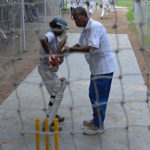Is it your turn to umpire? Perhaps your name has come up on the roster for scoring…
If you’ve never had either of these responsibilities before it can seem like a daunting prospect. I mean cricket is soooo complex right?
Luckily for first time scorers and umpires, much of the complexity and scoring “accountability” really comes into play with the older age groups in junior cricket and leading into senior cricket. For the younger age groups in junior cricket, as long as you keep an accurate score sheet, and can understand the basics of cricket (eg. what constitutes a “no ball”, how many balls need to be bowled in an over, “should I call that a wide delivery”, how to signal a “4” etc.) then you really are good to go.
Of course the more you do these things then the better you will become!
Scoring
The following video produced by the Community Junior Cricket Council gives a great introductory lesson into the art of scoring at a junior cricket level. If you’ve never scored a game before, watching this video a couple of times will give your confidence a much needed boost when it’s your time to do so…
If you want a more thorough overview of scoring at junior level the following video gives a ball-by-ball scoring tutorial. Following along with this will give you a “real world” example of how scoring is carried out.
New to e-Scoring?
Scoring a Junior Formats match on MyCricket Live Score
Watch the video (link below) to see how to score a Junior Formats app, from the beginning.
Using the DEMO match as an example, this video goes through a variety of features, including:
– Pre match setup (Stage 1)
– Toss Result
– Scoring
– Selecting New Batters/Bowlers
Umpire Signals
5 Umpire Signals:




